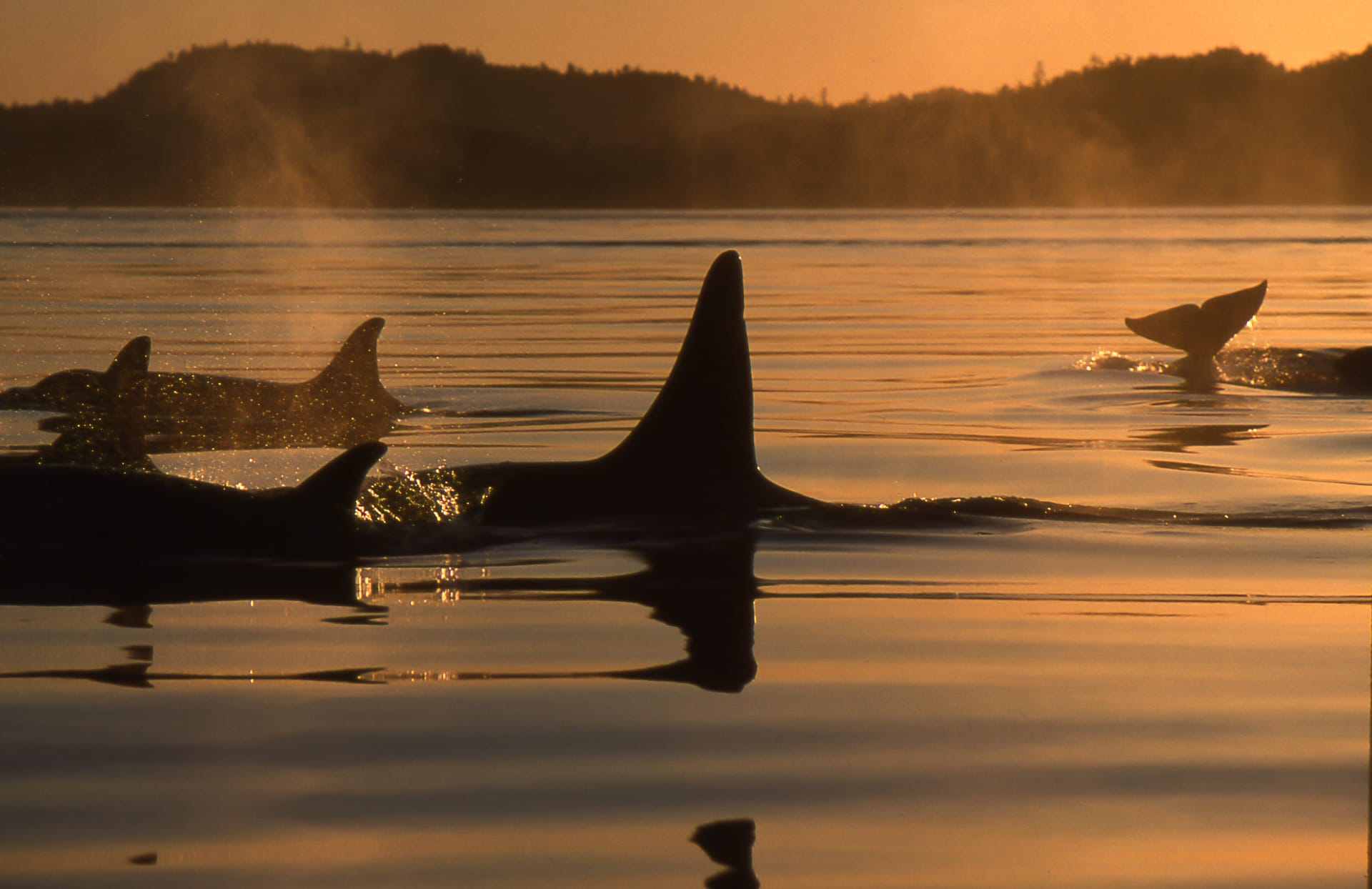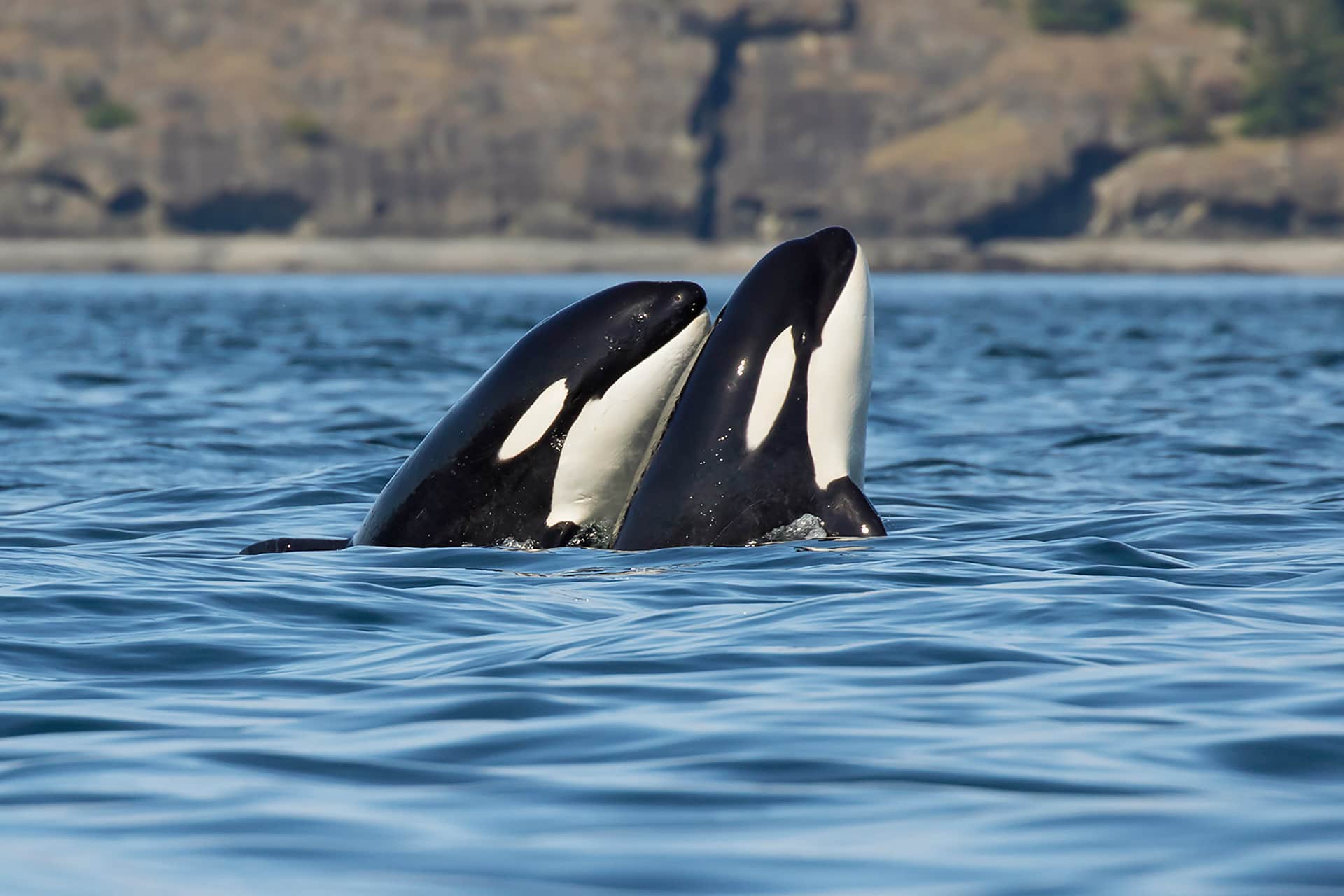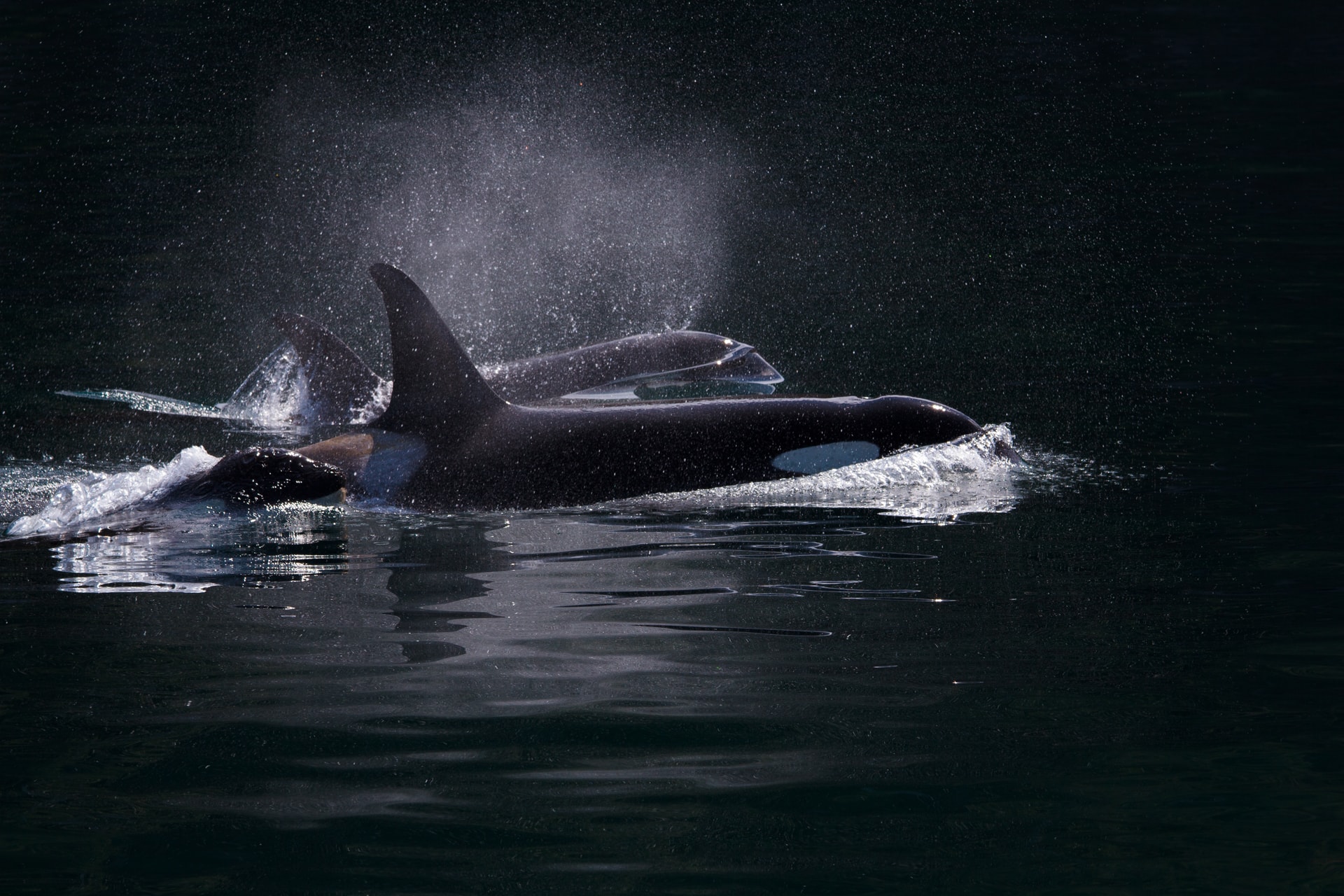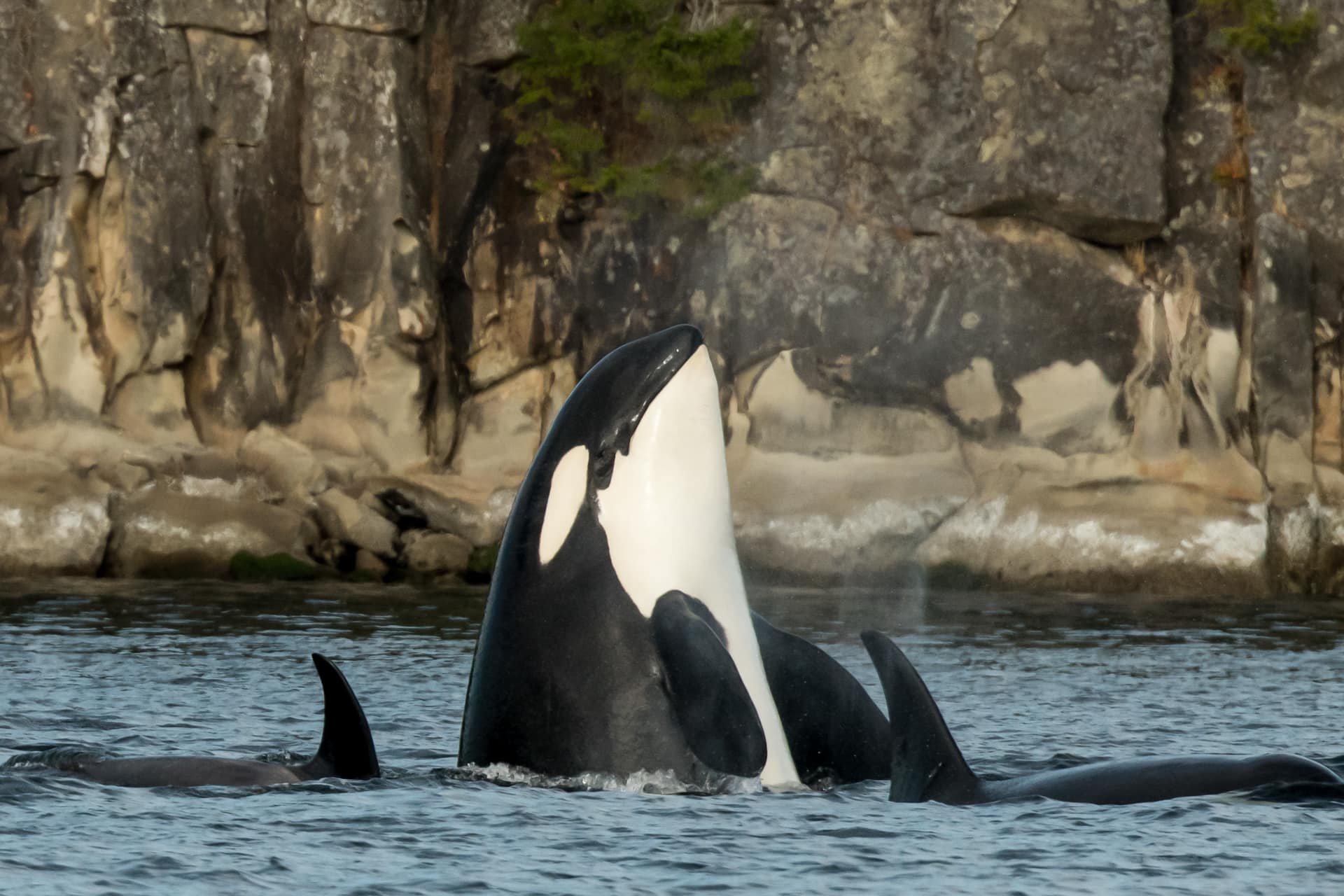
It’s concerning that after reviewing all the latest scientific evidence, NOAA Fisheries concluded that, “it is unclear which threat to this killer whale population is the most important for recovery.”
Yet a 2017 population viability analysis found that, ”the largest impact on the population growth rate was the effects of nutritional stress on reproduction and survival.” Such effects were in fact mirrored in two recent studies: Hormones in fecal samples revealed a 69% pregnancy failure rate, while drone studies showed “poor body condition” leads to mortality rates “2-3 times higher than whales in more robust condition.” Their publication “Survival of the fattest” speaks for itself.
Two few births and too many deaths has resulted in a steady population decline. Premature deaths of adults has population-wide impacts, with fewer grandmothers to improve family survival rates, and less mature males to father offspring.
NOAA lists 3 main threats to the Southern Resident killer whales:
1. Scarcity of prey; 2. Contaminants; and 3. Vessel disturbance.
NOAA’s latest review also noted their “vulnerability to the interacting impacts of contaminant exposure, low prey abundance, and other factors such as vessel disturbance that reduces their ability to locate prey.”
So just what can we learn from the latest research about these threats, and their interactions, and what are the solutions suggested for preventing extinction?
Threat 1: Scarcity of Prey
The Southern Residents rely almost exclusively on endangered Chinook salmon—year-round—as NOAA’s own diet study recently confirmed from analyses of fecal samples, fish scales, and tissue—with similar findings from a 2020 study that analyzed samples for chemical signatures of carbon and nitrogen.
Salish Sea sighting networks are witness to unprecedented change. Southern Residents’ spring visits are falling, which reflects the decline in vital Fraser River spring Chinook—as one study concluded; while coastal underwater listening stations record evidence of the increasing importance of nearshore waters for intercepting Columbia River spring Chinook returning to spawn.
Studies show that prey scarcity plays a role in the Southern Residents’ poor reproductive health. Females average 6.1 years between births, whereas orcas with abundant prey may give birth every 2 years. Of concern is that just two males fathered “52% of the offspring born between 1990 and 2015” and this limited choice of suitable mates may also be a factor in rare “matings between close relatives.”
Threat 2: Contaminants
Of particular concern are three persistent organic pollutants, or POPs, as DDT (pesticide), PBDEs (flame retardants), and PCBs are all found at “relatively high levels in the Southern Residents compared to other resident killer whales in the North Pacific.” Although now banned in the US, POPs persist in the environment and transfer up the marine food chain where they are stored in orcas’ blubber.
One study noted that “PCBs continue to be a concern for killer whales worldwide” even predicting global population collapse for these top predators due to “PCBs effects on reproduction and immune function.” In fact, several studies have shown that the Southern Residents have “some of the highest levels of POPs” compared to other cetaceans, including high levels of flame retardants.
A 2016 study found that POP levels were “higher in Southern Residents during low-Chinook years” and noted that prey scarcity “may exacerbate the effects” as POPs “become mobilized in the bloodstream.” In other words, when food is short, orcas use up the fat stores in their blubber, releasing toxicants.
Two studies linked high POP levels to “endocrine, metabolic, and immune disruption, cancer, decreased reproduction, and calf mortality.” Nursing calves are particularly vulnerable, as a 2018 study showed, “at the end of the lactation period, the calf blood POP levels were 5-8 times higher than its mother’s.”
Two recent studies show other chemical threats; one found that pollutants from oil and vessel exhaust are detectable in Southern Resident fecal samples, and in a yet-to-be published government study, the ubiquitous microplastic is also present, just as another study previously predicted, with “detectable levels of particles and fibers in every examined [fecal] sample from Southern and Alaskan Residents.”
Threat 3: Vessels
The Southern Residents rely on sound for communication and hunting, and both can be disrupted by vessels. While a 2016 study found that “hormone analysis from fecal samples suggested that prey availability may be a greater physiological stressor than vessel presence,” a number of recent studies found that vessels likely contribute to nutritional stress, with one finding that when vessels were present, “the probability of prey capture was reduced when salmon abundance was lower.” This study also found that females “switched from foraging states to traveling states at a greater rate than males in the presence of vessels.” This raises concern as a female provides food for her calves, other young family members, and any adult sons.
A 2021 study—using non-invasive digital acoustic recording tags—recorded orca behavior, and noise from vessels up to 400 m away, and found that vessels had “the potential to affect the echolocation abilities of foraging whales and their foraging dives and success.”
A land-based observer study concurred that “the whales spend more time traveling and performing surface-active behaviors and less time foraging when in the presence of all vessel types, including kayaks.” As other researchers noted, behavior switching is “costly“; using even more energy, but combined with a “decrease in prey consumption resulting from reduced foraging opportunities”.
Is there a solution? A 2017 study proposed that to reach the recovery target for Southern Residents—2.3% growth rate per year—it would be necessary to “reduce the acoustic disturbance by half and increase the Chinook abundance by 15%.”
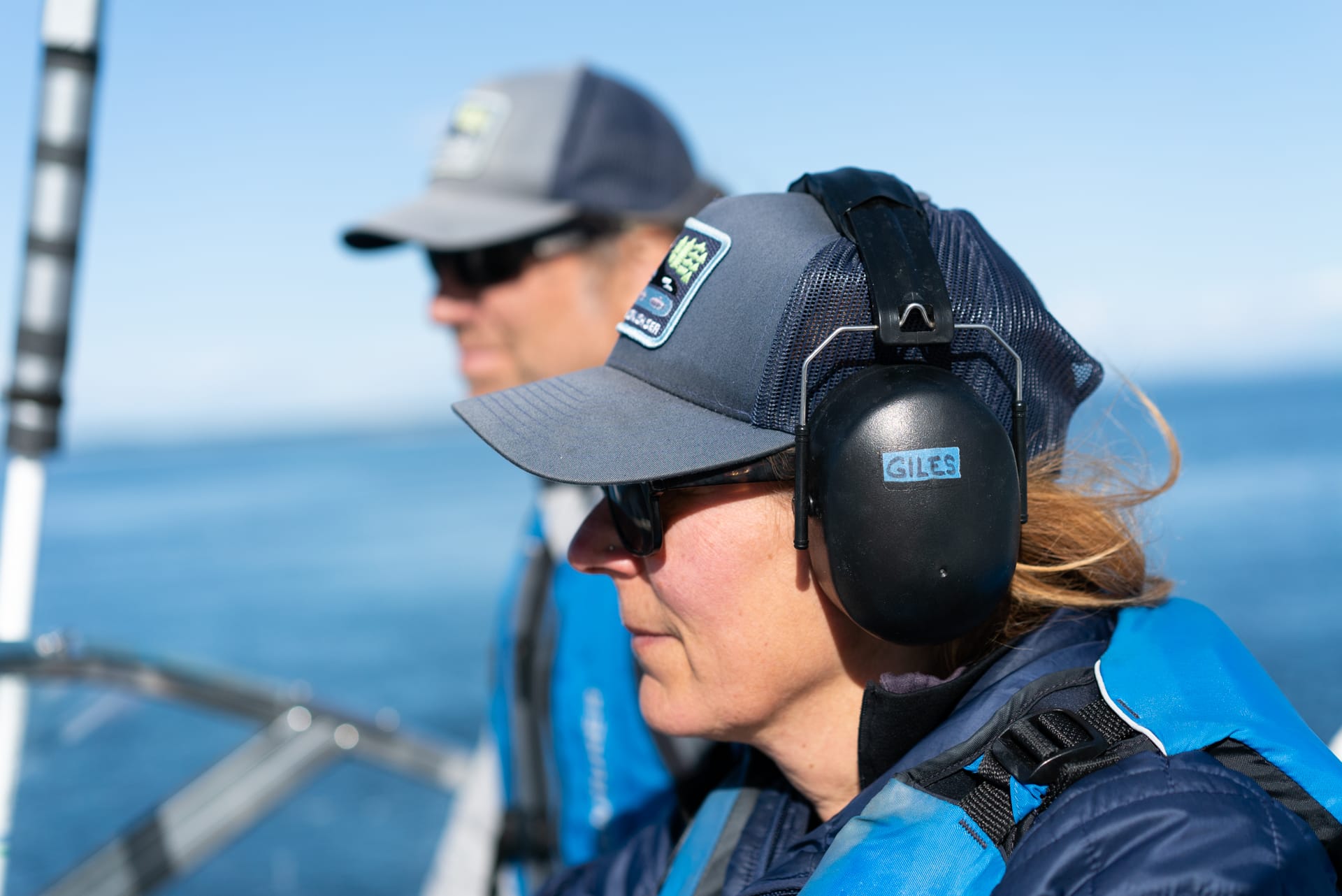
Members of the Wild Orca Southern Resident Killer Whale Health Monitoring Program team collect health data using non-invasive measures.
The Necessity of Non-Invasive Health Monitoring
NOAA Fisheries’ review noted that “non-invasive samples are promising sources of health information.” The latest available science shows the ever-increasing value of technology, non-invasively monitoring these orcas, using eyes in the sky, underwater ears, and smart tags.
“Biological” samples such as feces, mucus, skin, or breath can also be collected non-invasively and analyzed for a wide array of negative impacts. For example, one recent breath analysis study found Salmonella and antibiotic-resistant bacteria “implicating human waste sources in the marine environment.”
Testing exposure to POPs previously relied on blubber samples, yet fecal samples contain equivalent concentration levels leading NOAA to state that, “fecal samples will be a critical, non-invasive resource for contaminant monitoring moving forward.”
Continued below...
The Evidence is Clear
NOAA acknowledges that studies “reveal relationships between overall Chinook salmon abundance and Southern Resident survival, social cohesion, growth rate, body condition and fecundity.” Yet despite this, NOAA maintains that, “it has proved challenging to establish strong relationships between nutritional stress and Chinook salmon prey availability or any single causative factor.”
Could this disparity be due to placing the Southern Residents’ recovery in a category that reflects other interests? Or, as the law describes it, “also in conflict with economic activities.” It is through this commercial lens that the most up-to-date science can be considered insufficient, so that NOAA can repeat the mantra—more research and monitoring is needed. With the population smaller than when listed as endangered in 2008, is NOAA Fisheries simply running out the clock?
Yet well-fed Southern Residents would better weather the effects of pollution, therefore restoring Chinook must be the priority. Not only would this benefit the Southern Residents, it would support a viable fishery, respect tribal treaty rights, and benefit local economies. This surely is within the wheelhouse of the Department of Commerce, where NOAA resides?



